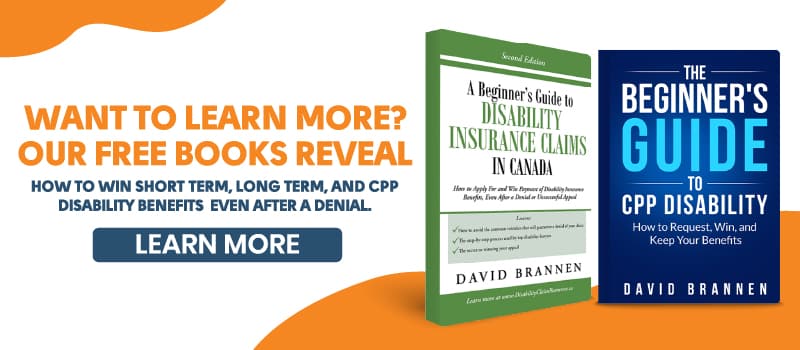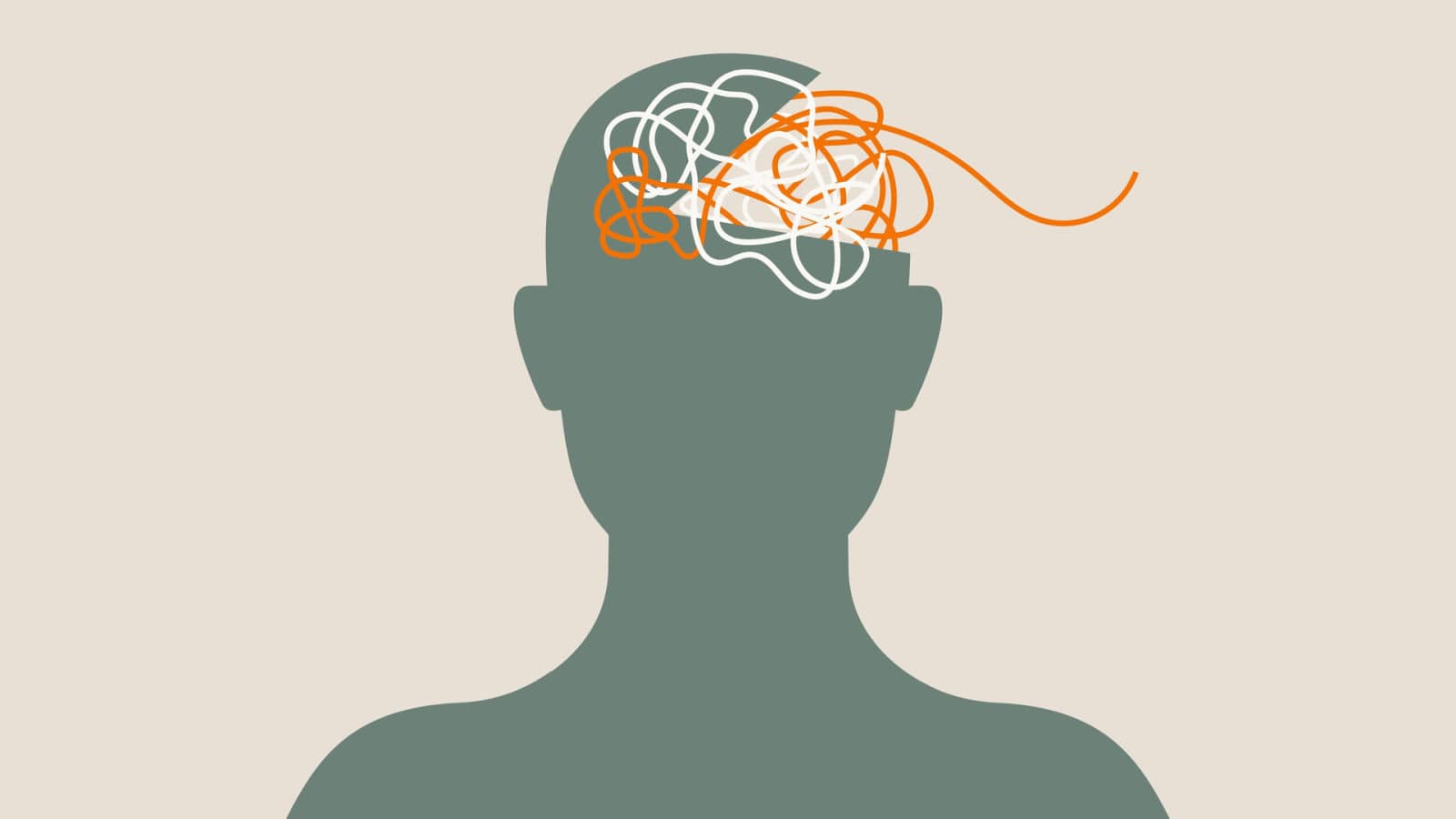People often ask us what conditions qualify for disability in Canada, and whether their diagnosis is on that list, so below we give a list of medical conditions that qualify for disability tax credit, a list of disabilities that qualify for ODSP and also what conditions qualify for cpp disability.
Any medical condition can potentially qualify for disability benefits as you will learn below. However, the focus is always on the extent of the disability caused by your medical condition. And whether the extent of your disability meets the requirements for various disability benefits plans and programs.
This article lists common disabling conditions and reviews the eligibility criteria for various disability benefits in Canada. So you can see if your medical condition qualifies for benefits.
What conditions qualify for disability in Canada?
So what is considered a disability in Canada? Well, any medical condition can qualify for disability benefits. Generally speaking, most benefits programs in Canada do not give-out benefits based on a medical diagnosis. Instead, they provide benefits based on the level of disability caused by the medical condition.
In other words, the level of disability caused by your medical condition is always the focus, not the diagnosis. To qualify for benefits, you must show that the level of disability from your medical condition meets the eligibility criteria of the disability benefits plan in question.
In the next section, we list the common medical conditions that qualify for disability tax credit, CPP and ODSP. For each of these conditions, we discuss the unique challenges you may face.
If you need information specifically about short and long term disability we have articles specific to what qualifies for short-term disability and what qualifies for long-term disability in Canada.
List of disabilities in Canada
The following is a list of medical conditions that may qualify for disability benefits:
Related Reading:
CPP
Any medical condition can qualify for CPP disability if it prevents you from doing gainful employment. You must also prove that your disability is permanent. If you suffer from a terminal illness, CPP disability will fast-track your application.
The following is the official requirement for CPP disability benefits. Your medical condition must cause a level of disability to meet the following requirement:
Section 42. When a person is deemed disabled — (2) For the purposes of this Act,
(a) a person shall be considered to be disabled only if he is determined in the prescribed manner to have a severe and prolonged mental or physical disability and for the purposes of this paragraph,
(i) a disability is severe only if, by reason thereof, the person in respect of whom the determination is made is incapable of regularly pursuing any substantially gainful employment, and
(ii) a disability is prolonged only if it is determined in the prescribed manner that the disability is likely to be long continued and of indefinite duration or is likely to result in death…
This means you can only qualify for CPP disability if your medical condition causes permanent disability that prevents you from regularly doing any kind of work. We also have more information at the following link on exactly what conditions qualify for CPP disability.
Medical Conditions that Qualify for Disability Tax Credit in Canada
The Disability Tax Credit (DTC) is different from other disability benefits plans. The above plans focus on how your medical condition affects your ability to work. Your ability to work is not the main focus. Instead, it focuses on impairment with your daily activities.
Eligibility
There are several medical conditions that qualify for the DTC. However, You automatically qualify for the DTC if your medical condition causes blindness or you need life-sustaining therapy. You also automatically qualify if you have Type 1 diabetes.
You may be eligible for the DTC if you are:
- blind
- markedly restricted in at least one basic activity of daily living
- significantly restricted in two or more basic activities of daily living
- need life-sustaining therapy
To qualify as blind, your visual acuity in both eyes must be 20/200 or less. Or your field of vision in both eyes is 20 degrees or less.
And to qualify for the life-sustaining therapy requirement, you need therapy to support a vital function. And you have to need it at least three times per week for an average of 14 hours per week.
Basic activities of daily living (BALD)
To qualify for the Disability Tax Credit (DTC), you must show that you became markedly restricted in one basic activity of daily living.
The basic activities of daily living (BADL) include the following:
- Speaking
- Hearing
- Walking
- Eliminating (bowel or bladder)
- Feeding
- Dressing
- Mental functions necessary for everyday life
Marked restriction
A marked restriction means you cannot do a BADL, or it takes excessive time to do it. It also must be present 90% of the time.
Cumulative effect of significant limitations
Alternatively, you can still qualify for the DTC if you show that your medical condition meets the cumulative effect of significant limitations requirements. This means you must be significantly limited in two or more of the BADLs. A significant limitation is one that doesn’t quite meet the requirement for marked restriction and is present at least 90% of the time.
Life-sustaining therapy
You can also qualify for the DTC if you meet the life-sustaining therapy requirement. Life-sustaining therapy is defined as therapy that:
- is essential to sustain a vital function;
- is required to be given at least three times each week for a total duration averaging not less than 14 hours a week and
- can not reasonably be expected to significantly benefit persons who are not so impaired.
Therapies that may meet this requirement include insulin therapy, kidney dialysis, taking medical foods and formulas, and more.
Overall, the DTC is the most complicated disability benefit. Keep in mind the focus is not on your ability to work. Instead, it focuses on the extent to which your medical condition(s) results in marked impairment in the basic activities of daily living. Or the extent to which your medical condition(s) resulted in the cumulative effect of significant restriction in two or more basic daily living activities.
Medical Conditions that Qualify for Workers’ Compensation
Each Provinces’ workers’ compensation program has its own eligibility criteria, but usually, they all include the following:
- Your employer has coverage through Workers’ Compensation; and
- You have suffered a work-related injury or illness.
Thus, any medical condition can qualify for workers’ compensation benefits so long as it is work-related and your employer is covered by the program.
It’s important to note that some workers may not be eligible for workers’ compensation, however. For instance, independent contractors and self-employed workers with no employees are common exceptions to this requirement. In most provinces, these individuals have to buy their own personal coverage. However, in some provinces like Alberta, businesses are required to provide insurance to non-employees, like contractors.
Additionally, some provinces don’t require all employers to register for workers’ compensation. For instance, in Nova Scotia and New Brunswick, employers only have to register for coverage if they manage a team of three or more full-time or part-time employees. However, most provinces require that employers register for workers’ compensation coverage after hiring their first employee. For example, in Ontario, employers must register within ten days after employing their first full-time employee or part-time employee.
Overall, keep in mind that any medical condition can qualify for workers’ compensation as long as it was caused by a work-related injury or illness and your employer is covered by the program. Ask your employer if you are ever unsure whether you have workers’ compensation benefits.
What medical conditions qualify for ODSP
The Ontario Disability Support Program (ODSP) is a social assistance program in Ontario designed to provide financial support and services to individuals with disabilities. To qualify for ODSP, an applicant must meet specific eligibility criteria related to both their medical condition and their financial circumstances.
The following are the requirements an applicant must meet:
- be at least 18 years of age
- be an Ontario resident
- have assets no greater than the limits set out in the program
- be in financial need
- meet the program’s definition of a person with a disability or be a member of a prescribed class
How does ODSP define a person with a disability?
The program defines a person with a disability as someone who:
- has a substantial mental or physical impairment that is continuous or recurrent and is expected to last one year or more
- the direct and cumulative effect of your impairment results in a substantial restriction in your ability to work, care for yourself, or take part in community life
- the impairment, its duration and restrictions have been verified by an approved healthcare professional
You can also qualify if you are a member of a prescribed class. Here are a few examples of members of a prescribed:
- Individuals who receive CPP-D or QPP-D disability benefits
- A person who is 65+ years old and not eligible for Old Age Security (OAS)
- A resident or former resident of homes that are part of the Community Homes for Opportunity program
To learn more about other prescribed classes, visit the government of Ontario’s page on ODSP.
In terms of medical conditions and disabilities that qualify for ODSP, the program considers a wide range of physical, mental, and developmental impairments that significantly impact an individual’s to engage in gainful employment.
List of disabilities that qualify for ODSP
Some examples of medical conditions that may qualify include but are not limited to:
- Physical Disabilities: Conditions such as mobility impairments, chronic pain disorders, spinal cord injuries, amputations, and other conditions that affect an individual’s physical functioning.
- Mental Health Disorders: Severe mental health conditions like schizophrenia, bipolar disorder, major depressive disorder, and anxiety disorders that substantially interfere with daily functioning and overall well-being.
- Developmental Disabilities: Disorders such as autism spectrum disorder, intellectual disabilities, and other developmental conditions that affect cognitive and adaptive functioning.
- Chronic Illnesses: Conditions like multiple sclerosis, HIV/AIDS, cancer, and other chronic illnesses that create ongoing medical needs and limitations.
- Neurological Disorders: Conditions like epilepsy, Parkinson’s disease, and other neurological disorders that impact motor control and overall functioning.
- Visual or Hearing Impairments: Significant visual or hearing impairments that hinder an individual’s ability to perform essential daily tasks.
It’s important to note that each application is evaluated on a case-by-case basis, and the severity of the disability and its impact on daily living are key factors in determining eligibility. Additionally, applicants need to provide medical documentation and complete assessments to demonstrate the extent of their disability.
Here at Resolute Legal, we do not offer services for ODSP. So, we highly recommend that individuals seeking to apply or appeal a denial for ODSP consult with the official program guidelines and seek advice from qualified professionals who can provide accurate information about eligibility criteria and the application/ appeal process.
Download Our Free Books
Subscribe to our email newsletter, and we will email you free PDF copies of our books for winning CPP disability, short-term disability and long-term disability benefits. Click on the image below to get the free books.



